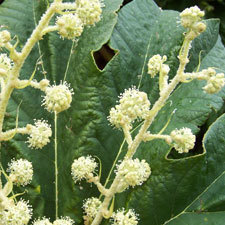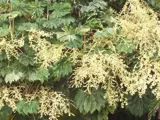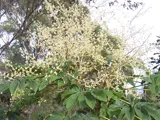 Rice paper plant
Rice paper plant
Common name: Rice paper plant
Botanical name: Tetrapanax papyrifer
Management category: Advisory
Originally from South China and Taiwan. Rice paper plant gets its name from early confusion by European botanists about the source of the plant used to make rice paper.
Why is it a pest?
- This is a fast growing plant that will quickly grow above and then shade out other plants.
- The foliage can cause skin irritations.
- It grows densely through underground suckers which can reach 2m out from the parent plant before popping up to form a new plant.
Where is it found?
It is found throughout the Bay of Plenty region in various habitats. It likes disturbed areas – forest margins, shrubland, stream banks, roadsides, urban areas.
What does it look like?
- A small tree, rice paper plant can grow up to 7m.
- Stems are hairy when they are young and then smooth out as the plant matures.
- Leaves are large and also hairy on both surfaces when young, and then, like the stems, become smooth as the plant matures.
- Flowers are very small and white and start off as woolly, ball-like clusters. You’ll see them in the autumn months.
What are the rules?
Advisory
Council does not enforce the control of advisory species. It is landowner/occupier responsibility to manage these pests. Council may provide advice on how to manage or control advisory species if required.
How do you get rid of it?
Rice paper plant can be controlled year round. Plants can be dug out and root systems removed. Dispose of all plant material in general waste. Look for, and remove, new shoots as often as you need to. Remember that new plants can grow 2m from the parent plant thanks to the suckers that grow underground.
CAUTION: When using any herbicide or pesticide, PLEASE READ THE LABEL THOROUGHLY to ensure that all instructions and directions for the purchase, use and storage of the product, are followed and adhered to.
Read more on pest control advice, information and regulations.
Images



